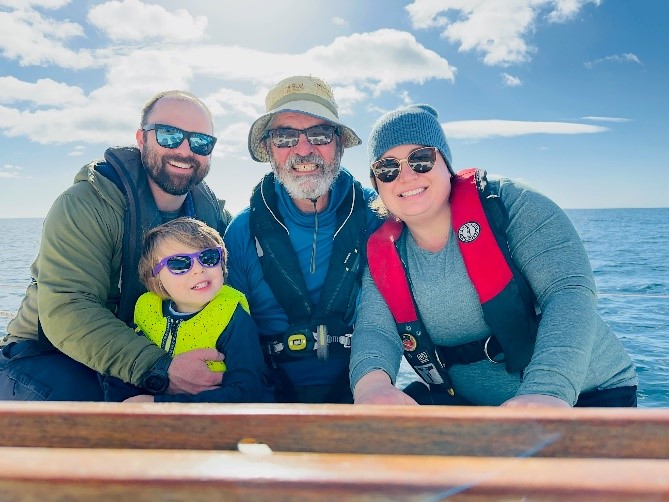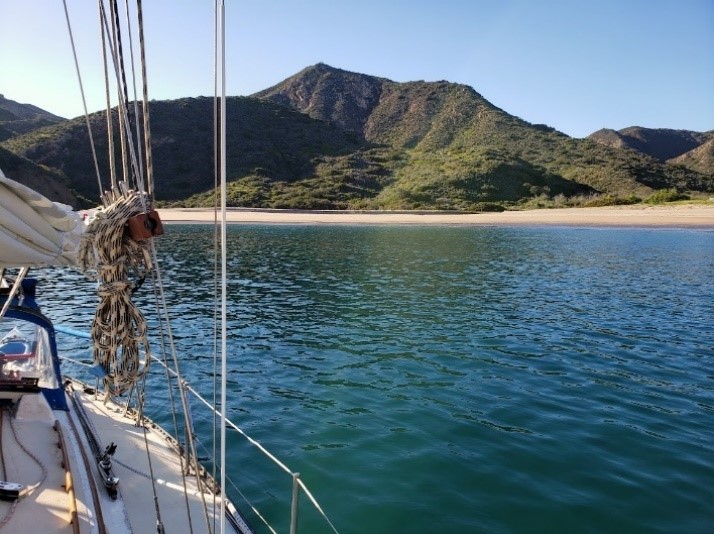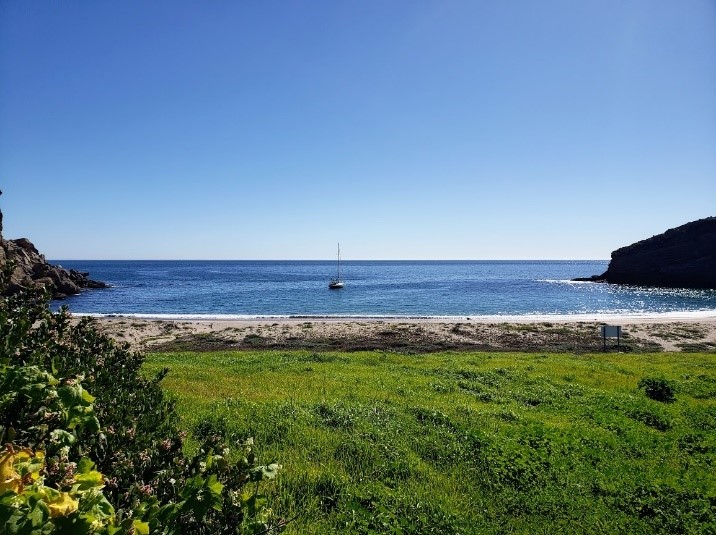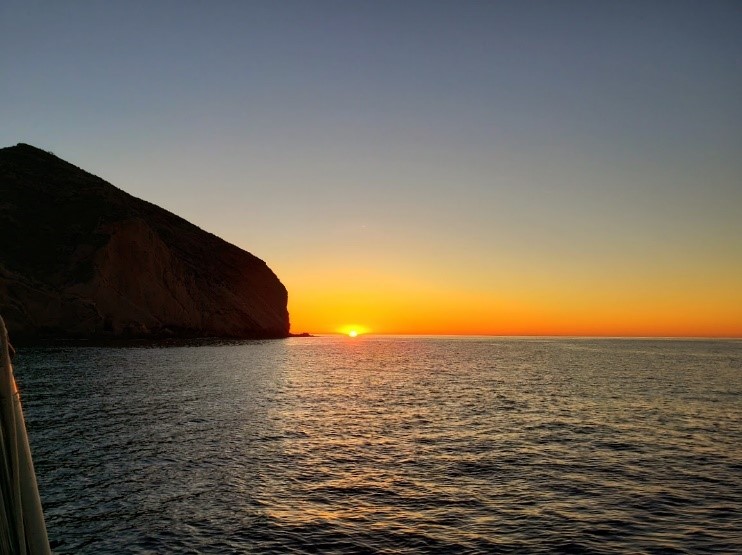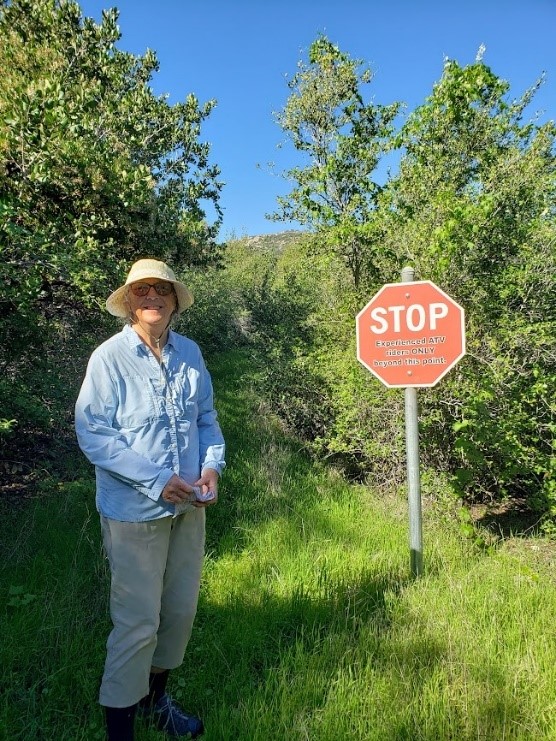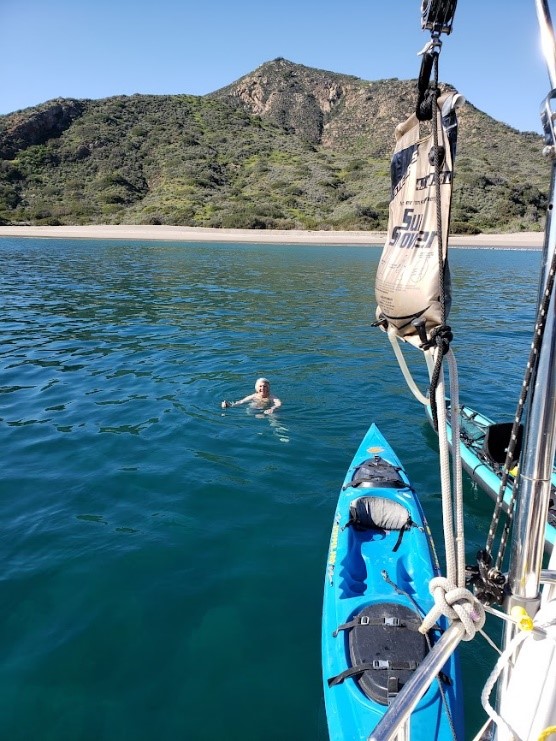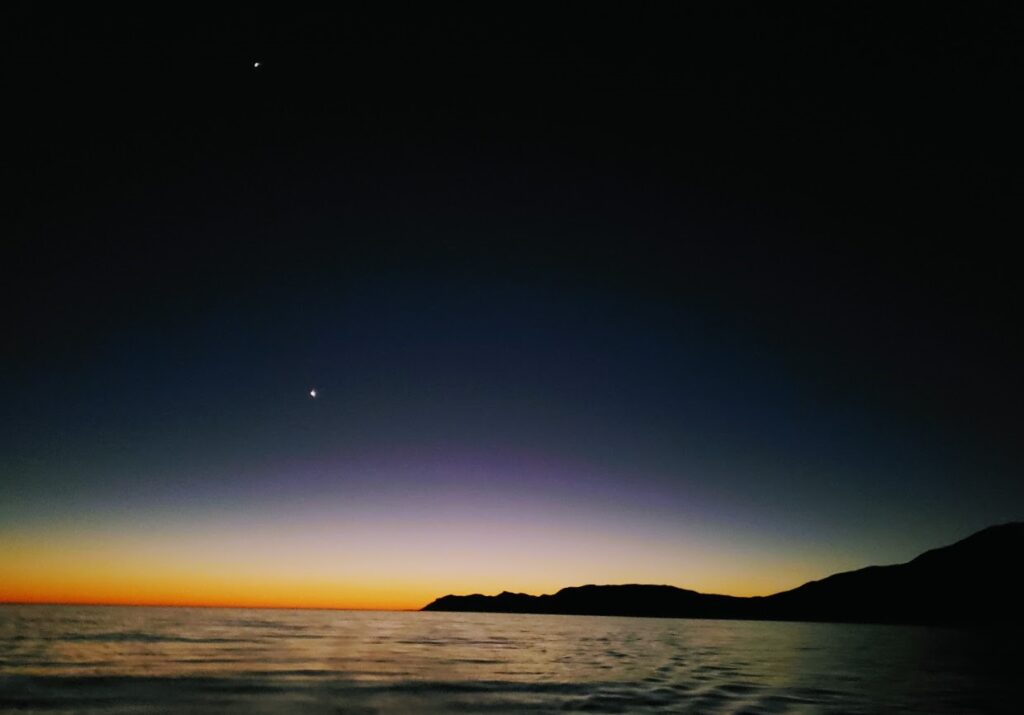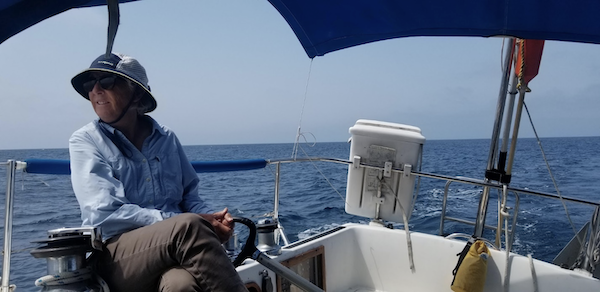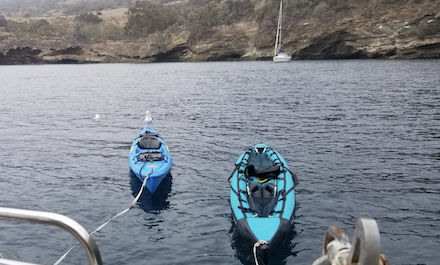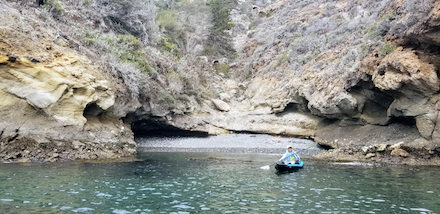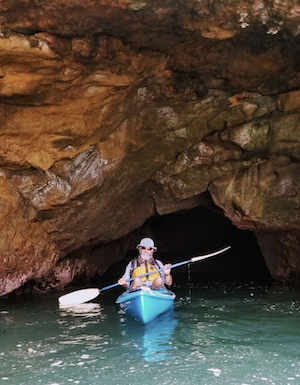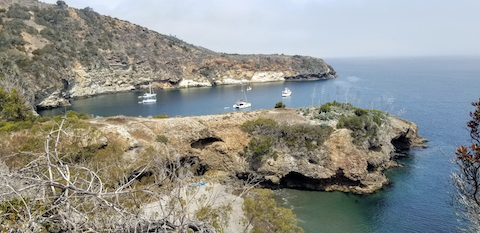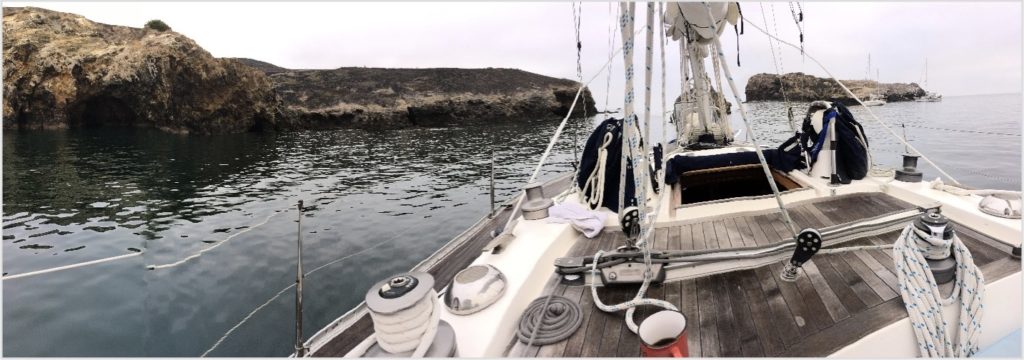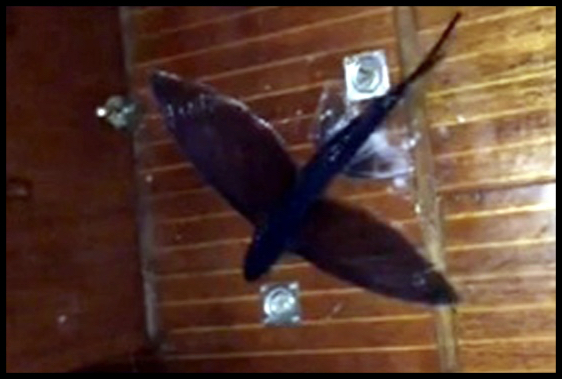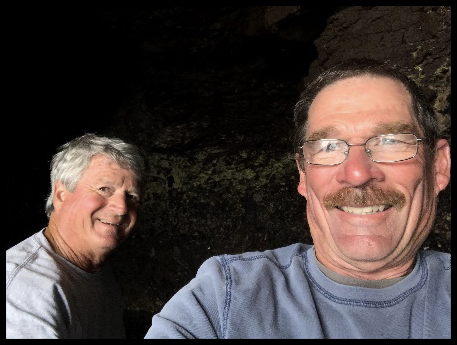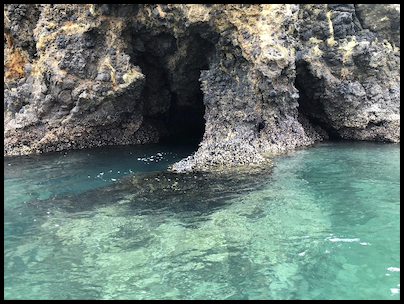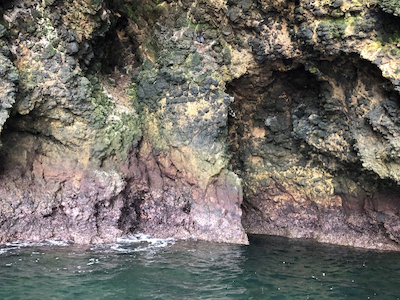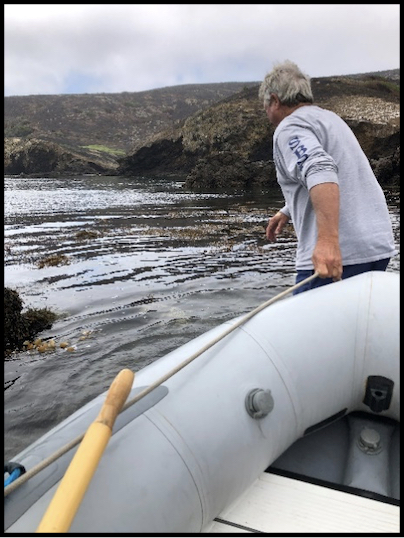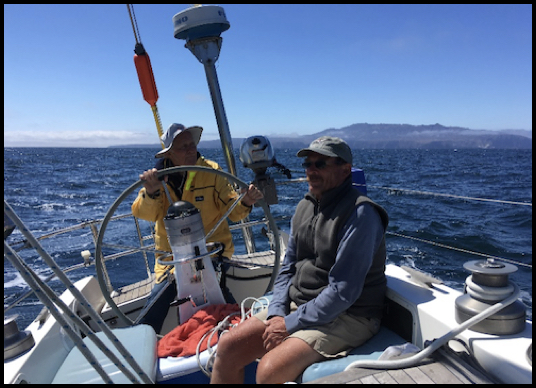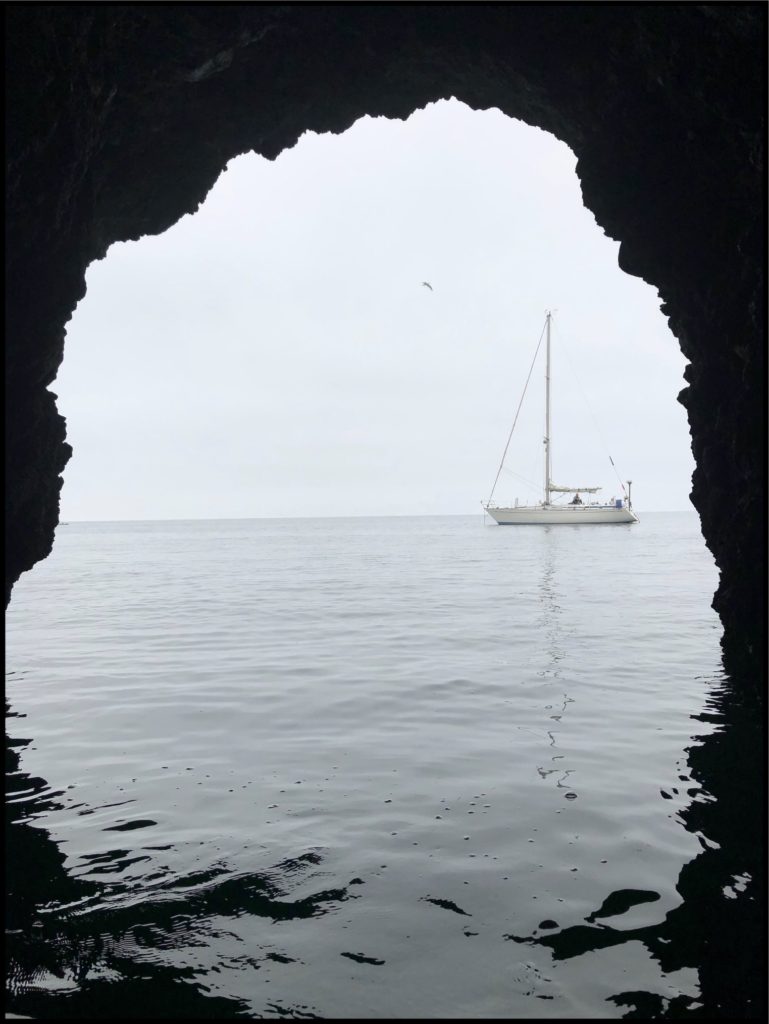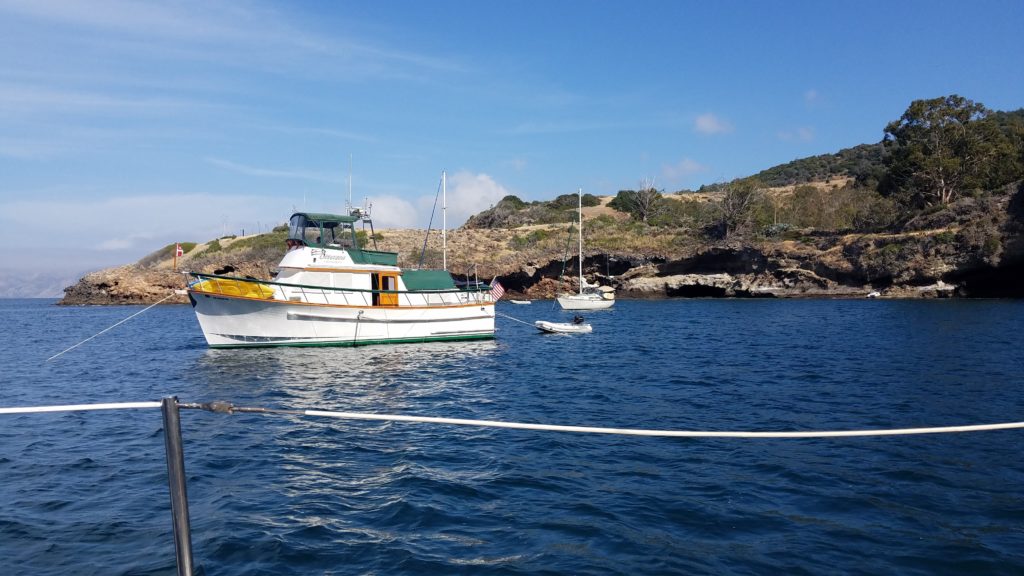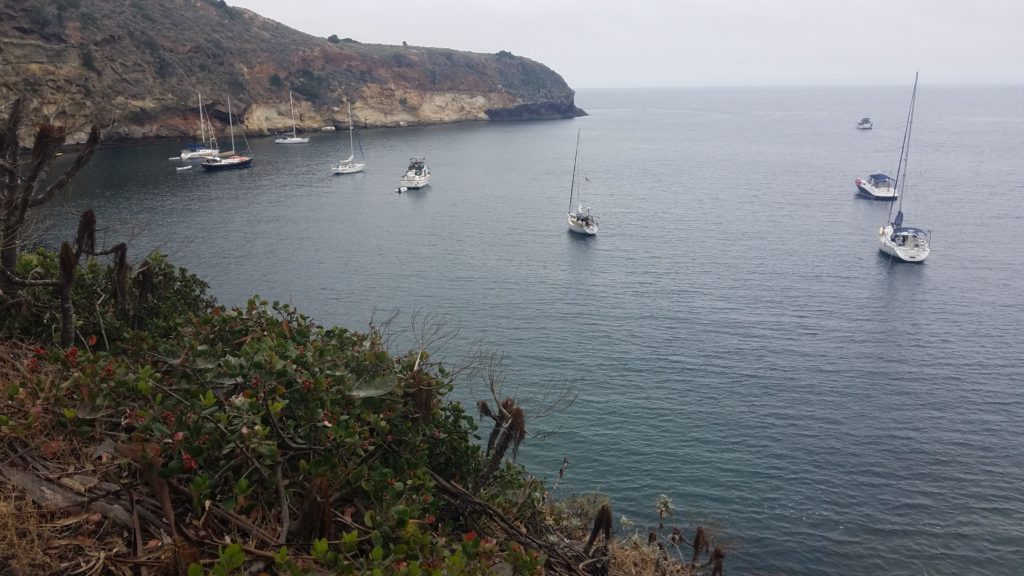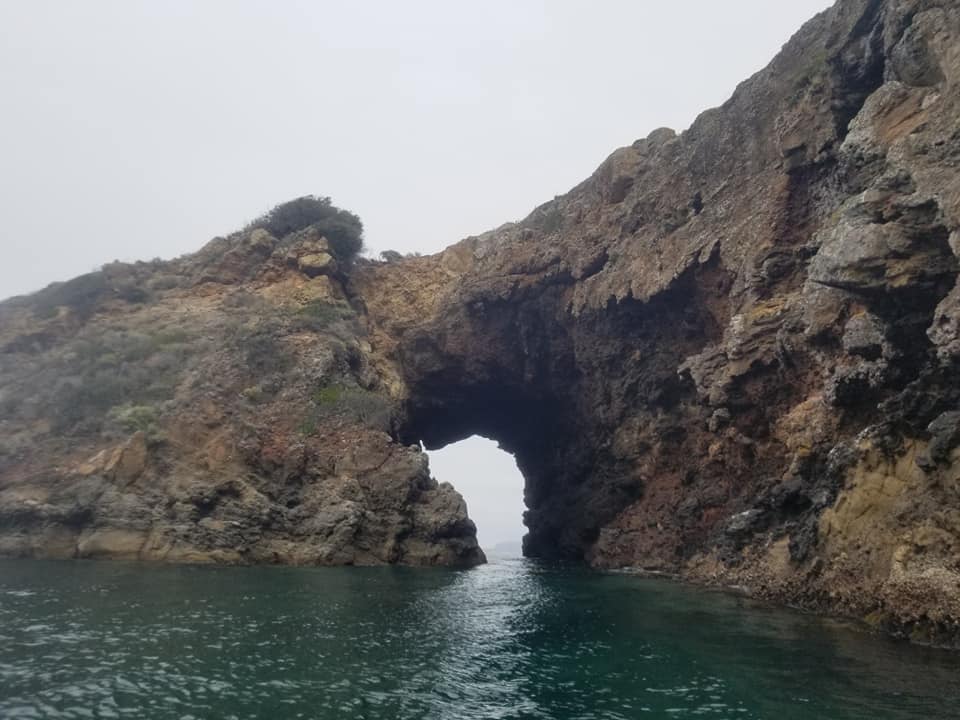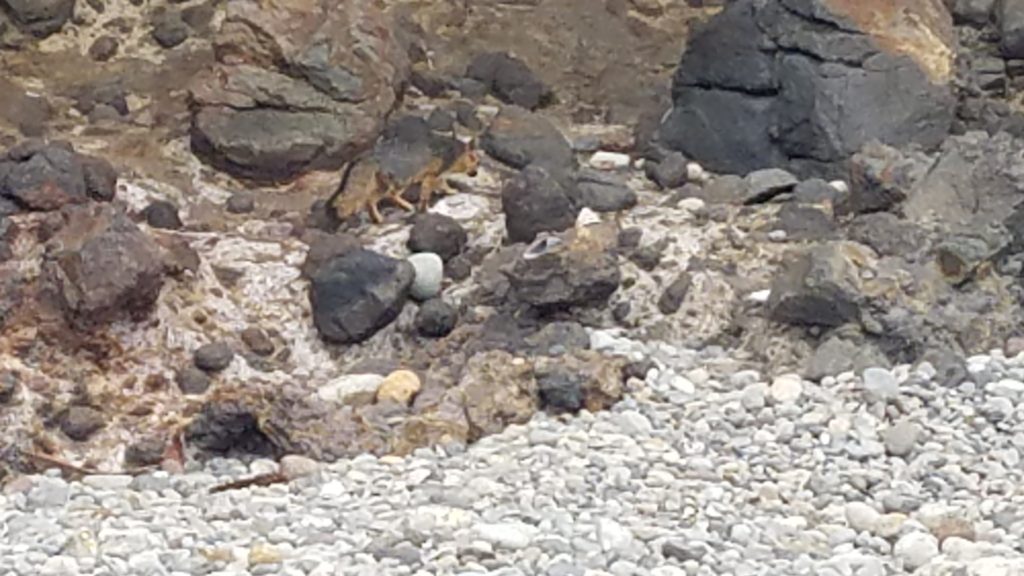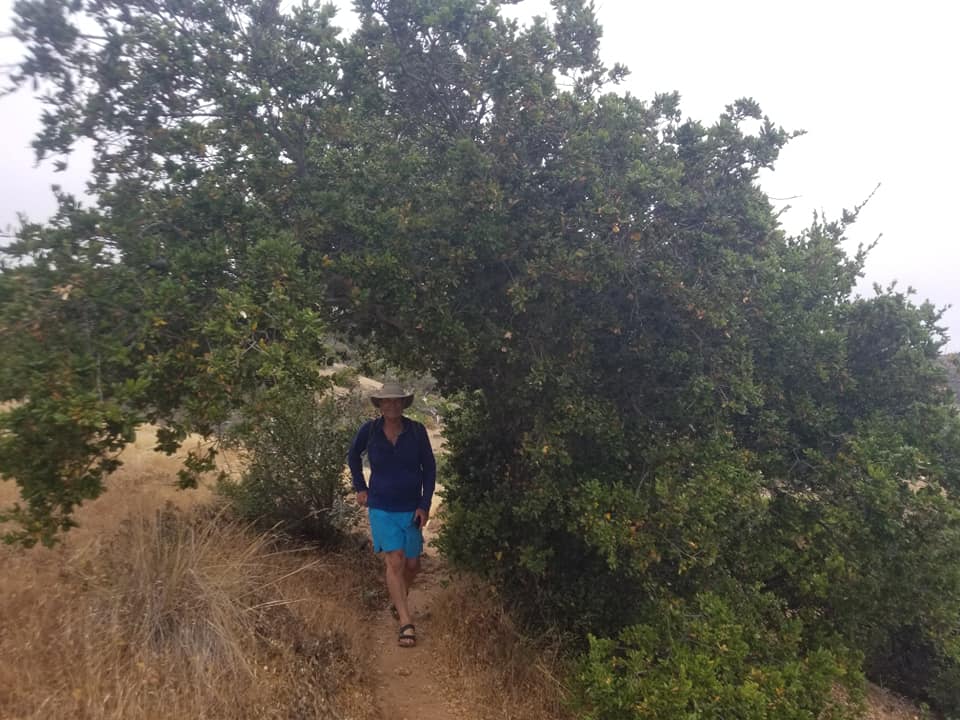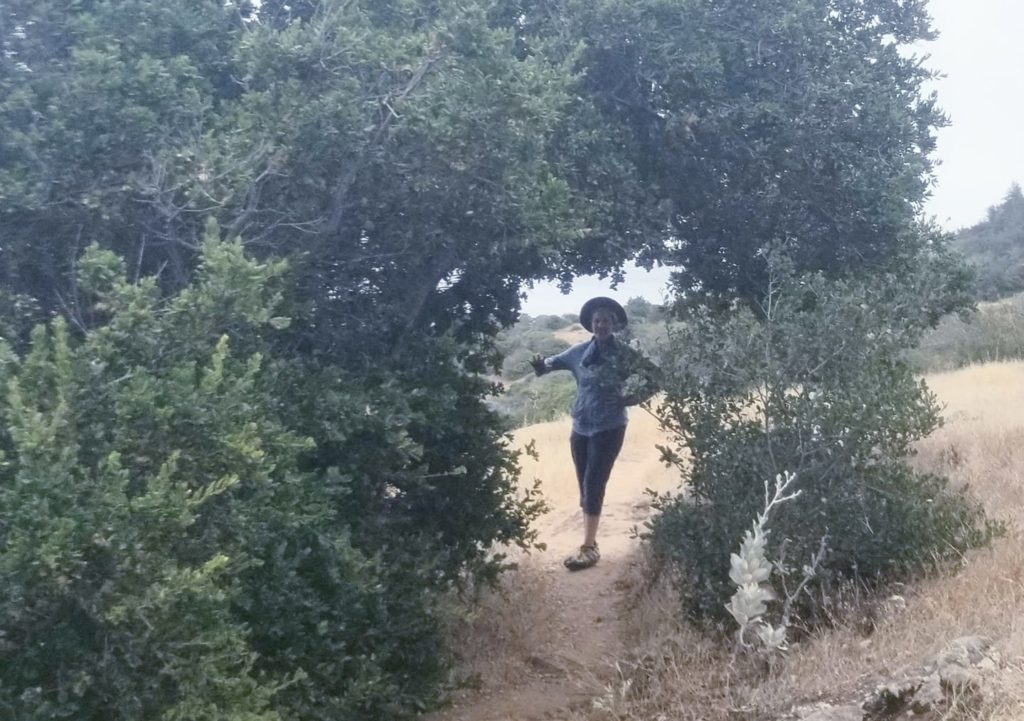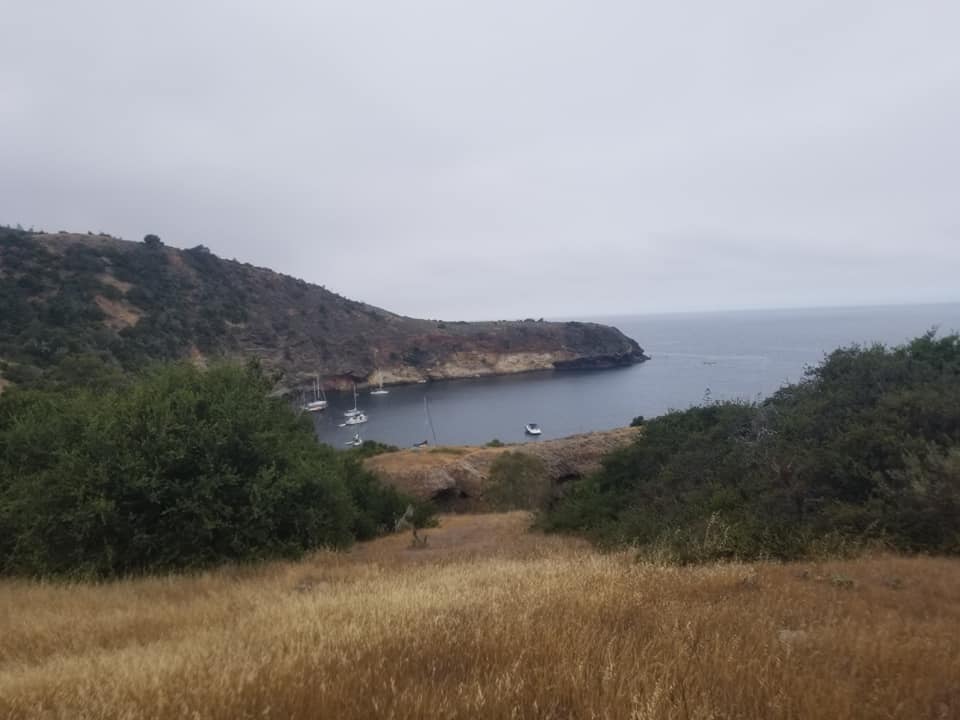I go to Frys every May to find out what I’ve forgotten to bring so I’ll be better prepared for the rest of the summer.
High point of the trip was that the Coreopsis gigantea was in bloom, Usually, they bloom in March and April, but with the rain, they were beautiful in May.
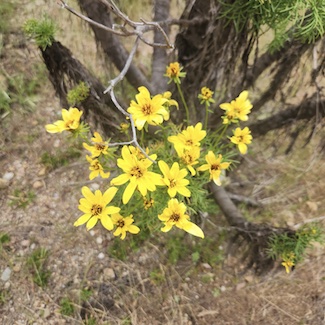
This year we were also able to help others that may anchor at Frys later this summer. We killed about 100 flies at the anchorage, so maybe we decimated the population. Time will tell.
It was overcast and cold with the sun coming out for about ½ hour Friday afternoon, the crossing was calm with no wind Friday morning, and returning on Saturday we had enough wind to motor sail for two hours on the way back. Two other boats at the anchorage, Alec Hardy and Bob and a couple from Ventura Power squadron, (Jim and Alice) that invited all of us for happy hour Friday evening on their boat, Slingshot.

I’d only forgotten some silverware that I took home to be washed last fall, so very good shakedown trip.
More on the shakedown cruise
The only thing I forgot from my meticulous Meal list were lemons, so food was not an issue. We were able to do light hiking, explore the sea caves and the historical rusted metal something-or-others on the beach.
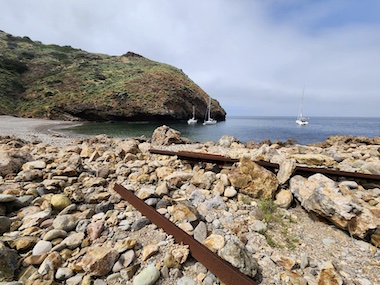
Saturday morning we made sure to catch lots of fish and scallops as soon as Benchmark left. Saturday night dinner was Ocean Whitefish Alfredo over fettuccini with a scallop sashimi appetizer. Slingshot had
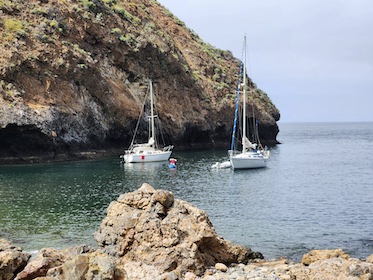
left by this time, and we assumed we’d be there alone, but we were joined by one other boat around sundown.
Most of our issues were cooking related and I need a new stove top before the next trip as the current one likes to leak huge clouds of propane.


